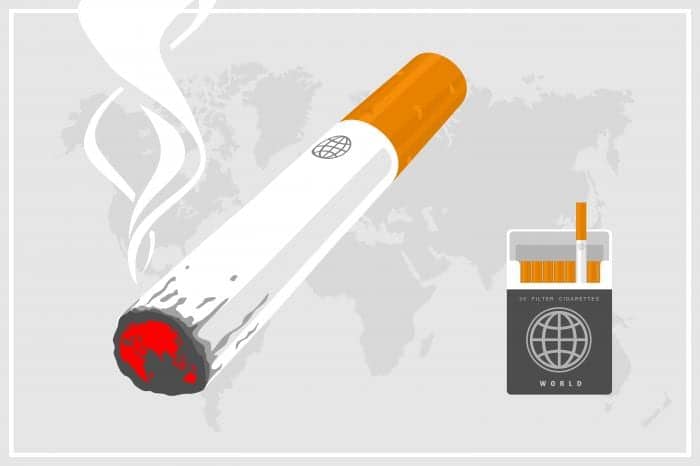Globally there are 1.25 billion adult tobacco users, according to the latest estimates in the World Health Organization (WHO) tobacco trends report. Trends in 2022 show a continued decline in tobacco use rates globally, with about 1-in-5 adults worldwide consuming tobacco compared to 1-in-3 in 2000.
The report shows that 150 countries are successfully reducing tobacco use. Brazil and the Netherlands are seeing success after they implemented MPOWER tobacco control measures, with Brazil making a relative reduction of 35% since 2010 and the Netherlands on the verge of reaching the 30% target.
“Good progress has been made in tobacco control in recent years, but there is no time for complacency. I’m astounded at the depths the tobacco industry will go to pursue profits at the expense of countless lives. We see that the minute a government thinks they have won the fight against tobacco the tobacco industry seizes the opportunity to manipulate health policies and sell their deadly products,” says Dr Ruediger Krech, Director of WHO Department of Health Promotion.
WHO urges countries to continue putting in place tobacco control policies and continue to fight against tobacco industry interference.
Currently the WHO South-East Asian Region has the highest percentage of population using tobacco at 26.5% with the European Region not far behind at 25.3%. The report shows that by 2030 the WHO European Region is projected to have the highest rates globally with a prevalence of just over 23%. Tobacco use rates among women in WHO’s European region are more than double the global average and are reducing much slower than in all other regions.
While the numbers have steadily decreased over the years the world will make it to a 25% relative reduction in tobacco use by 2025, missing the voluntary global goal of 30% reduction from the 2010 baseline. Only 56 countries globally will reach this goal, down four countries since the last report in 2021.
The prevalence of tobacco use has changed little since 2010 in some countries, while six countries are still seeing tobacco use rising: Congo, Egypt, Indonesia, Jordan, Oman, and Republic of Moldova.
WHO urges countries to accelerate efforts for tobacco control as there is still much work to be done. “The Global Tobacco Industry Interference Index 2023”, published by STOP and the Global Center for Good Governance in Tobacco Control, show that efforts to protect health policy from increased tobacco industry interference have deteriorated around the world.
Country surveys consistently show that children aged 13–15 years in most countries are using tobacco and nicotine products. To protect the future generations and ensure that tobacco use continues to decline, WHO will dedicate this year’s World No Tobacco Day to Protecting children from tobacco industry interference.
Next month countries are set to meet in Panama for the 10th Session of WHO Framework Convention on Tobacco Control (FCTC) Conference of Parties where the tobacco industry will try to influence global health policies by offering financial and in-kind incentives, interfering with countries rights to protect the health of their populations. Strengthening the WHO FCTC is a global health priority outlined in the Sustainable Development Goals. WHO stands ready to support countries in defending evidenced based tobacco control measures in the face of industry interference.








